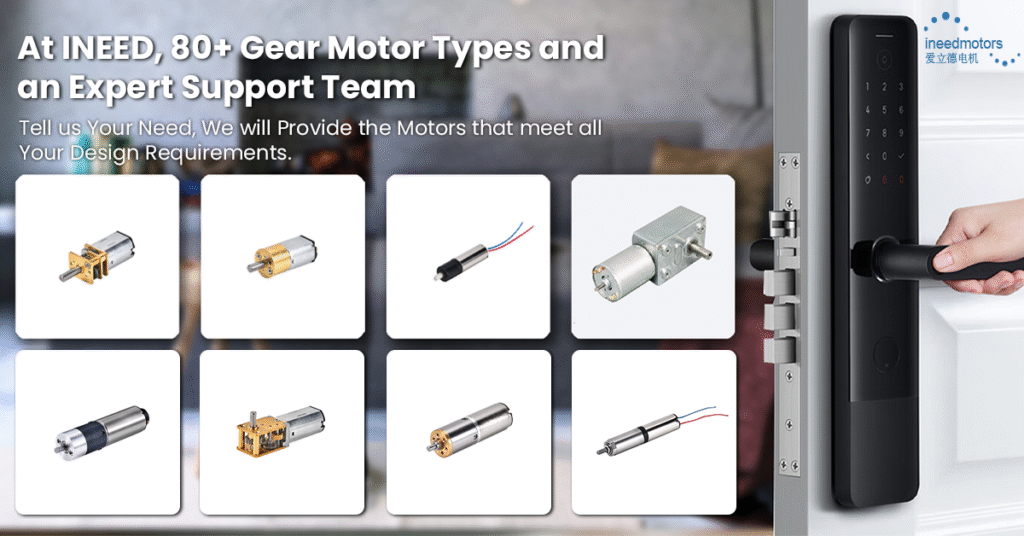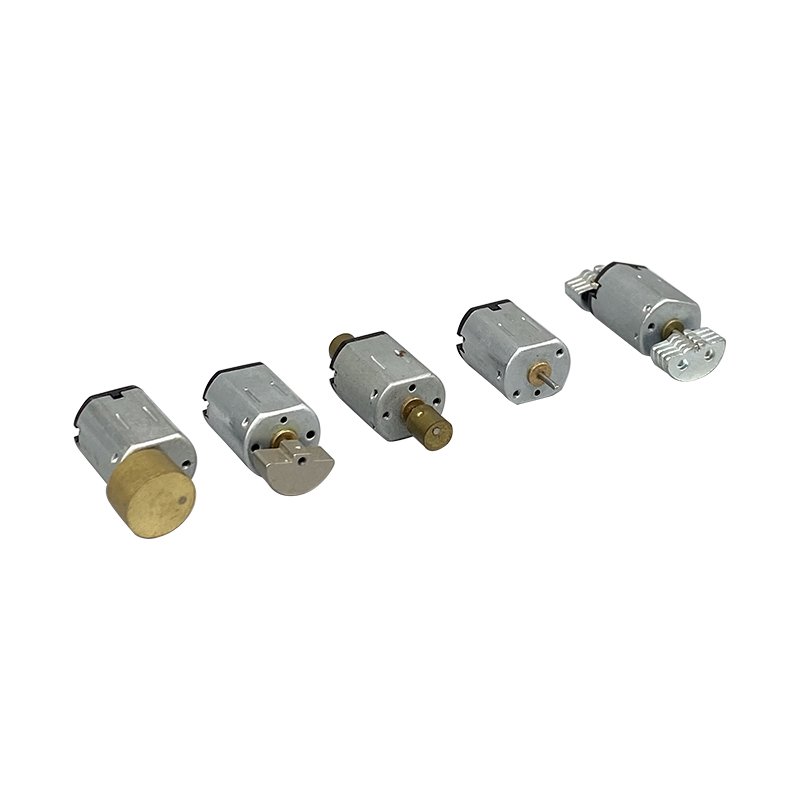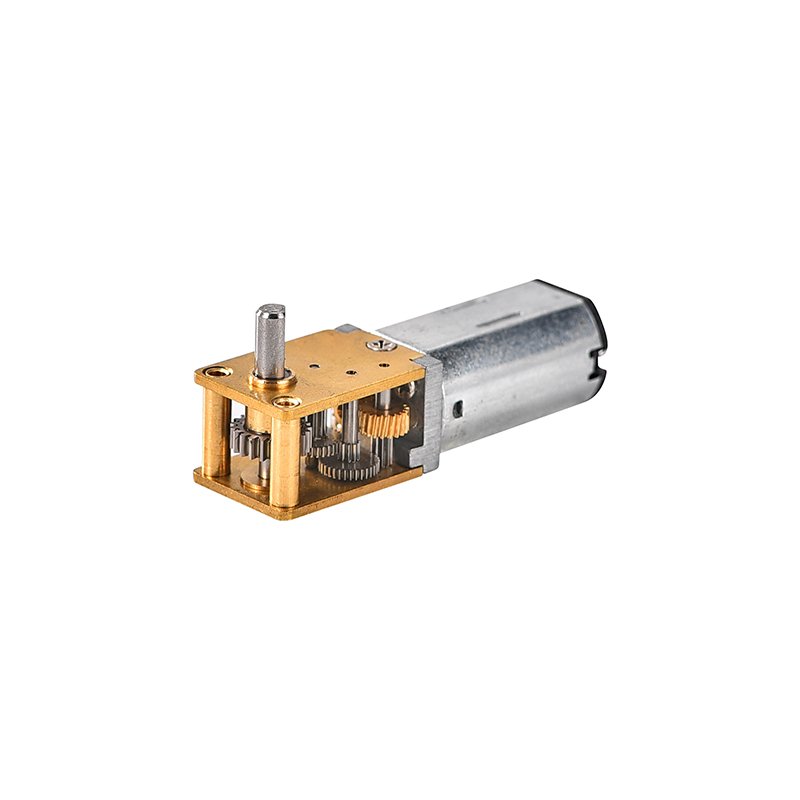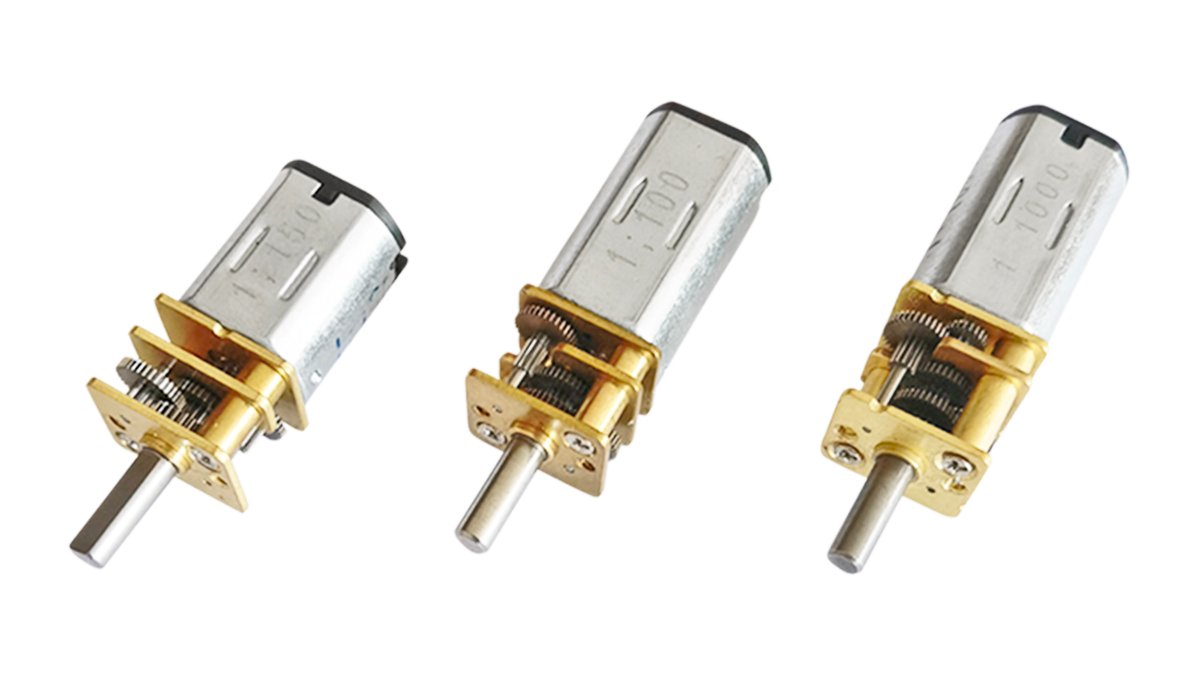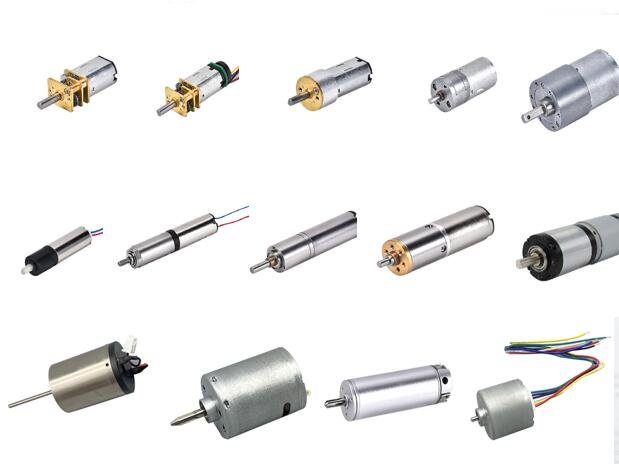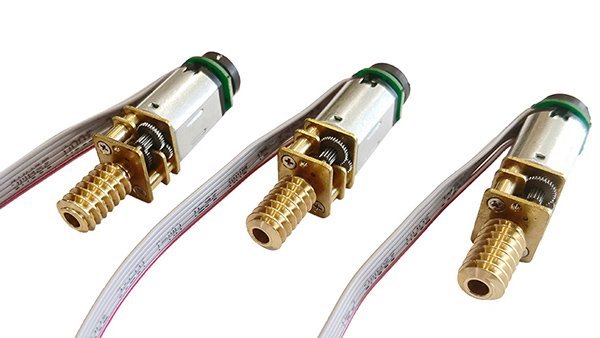Pour choisir le bon motoréducteur, il faut d'abord savoir ce dont on a besoin. Vous devez comprendre comment chaque option modifie le fonctionnement de l'appareil. Elles influencent également la durée de vie de votre projet. Chaque projet étant différent, concentrez-vous sur ce qui est le plus important pour vous.
✅ Conseil : Faites une liste des besoins de votre projet. Cela vous aidera à choisir le motoréducteur le mieux adapté à votre travail.
Principaux enseignements
Tout d'abord, notez les besoins de votre projet afin de pouvoir choisir un motoréducteur adapté à votre travail. - Déterminez la couple droit et pensez à la capacité de surcharge pour que votre motoréducteur fonctionne bien et dure longtemps. - Assurez-vous que la vitesse et le rapport de démultiplication du motoréducteur correspondent à votre projet, afin qu'il fonctionne en douceur et utilise bien l'énergie. - Vérifiez que le type d'alimentation et la tension sont identiques à ceux de votre site afin d'éviter tout dommage et d'assurer la sécurité de votre motoréducteur. - Mesurez votre espace et choisissez la bonne taille et le bon style de montage pour qu'il s'adapte à votre installation et soit facile à entretenir.
1. Exigences en matière d'application
Définir vos besoins
Avant choix d'un motoréducteurPour ce faire, vous devez planifier votre projet. Chaque projet est différent et a ses propres besoins. Vous devez savoir ce que vous attendez de votre entraînement. Notez les principales fonctions de votre motoréducteur. Réfléchissez au type de charge de votre projet. La charge restera-t-elle la même, changera-t-elle ou sera-t-elle soudaine ? Le type de charge détermine le choix du motoréducteur.
Dressez une liste des besoins de votre projet :
Quelle est la charge totale ?
Combien de fois l'entraînement se déroulera-t-il ?
De quoi la charge a-t-elle besoin pour démarrer, s'arrêter et fonctionner ?
Votre projet nécessite-t-il un contrôle précis de la vitesse ?
Le motoréducteur fonctionnera-t-il dans des endroits difficiles ?
📝 Conseil : Essayez d'utiliser des outils en ligne ou des listes de contrôle fournies par le fabricant. Ces outils vous aident à vous souvenir des détails importants.
Classer les critères par ordre de priorité
Tous les besoins ne sont pas aussi importants les uns que les autres. Vous devez choisir les éléments les plus importants pour votre projet. Certaines personnes accordent plus d'importance aux besoins de chargement et au choix de la motorisation. D'autres s'intéressent davantage à l'espace ou à la qualité du fonctionnement. Mettez de l'ordre dans vos besoins avant de choisir un motoréducteur. Cela vous aidera à vous concentrer sur ce qui est le plus important.
Les choses courantes à placer en premier :
Besoins en charge et choix de l'entraînement
Vitesse et couple du projet
Taille du motoréducteur et montage
Source d'alimentation et tension
Lieu d'utilisation du motoréducteur
Lorsque vous mettez de l'ordre dans vos besoins, choix d'un motoréducteur est plus facile. Vous réduisez également le risque de faire le mauvais choix. Vérifiez toujours votre liste avant de faire votre choix définitif.
2. Charge et couple
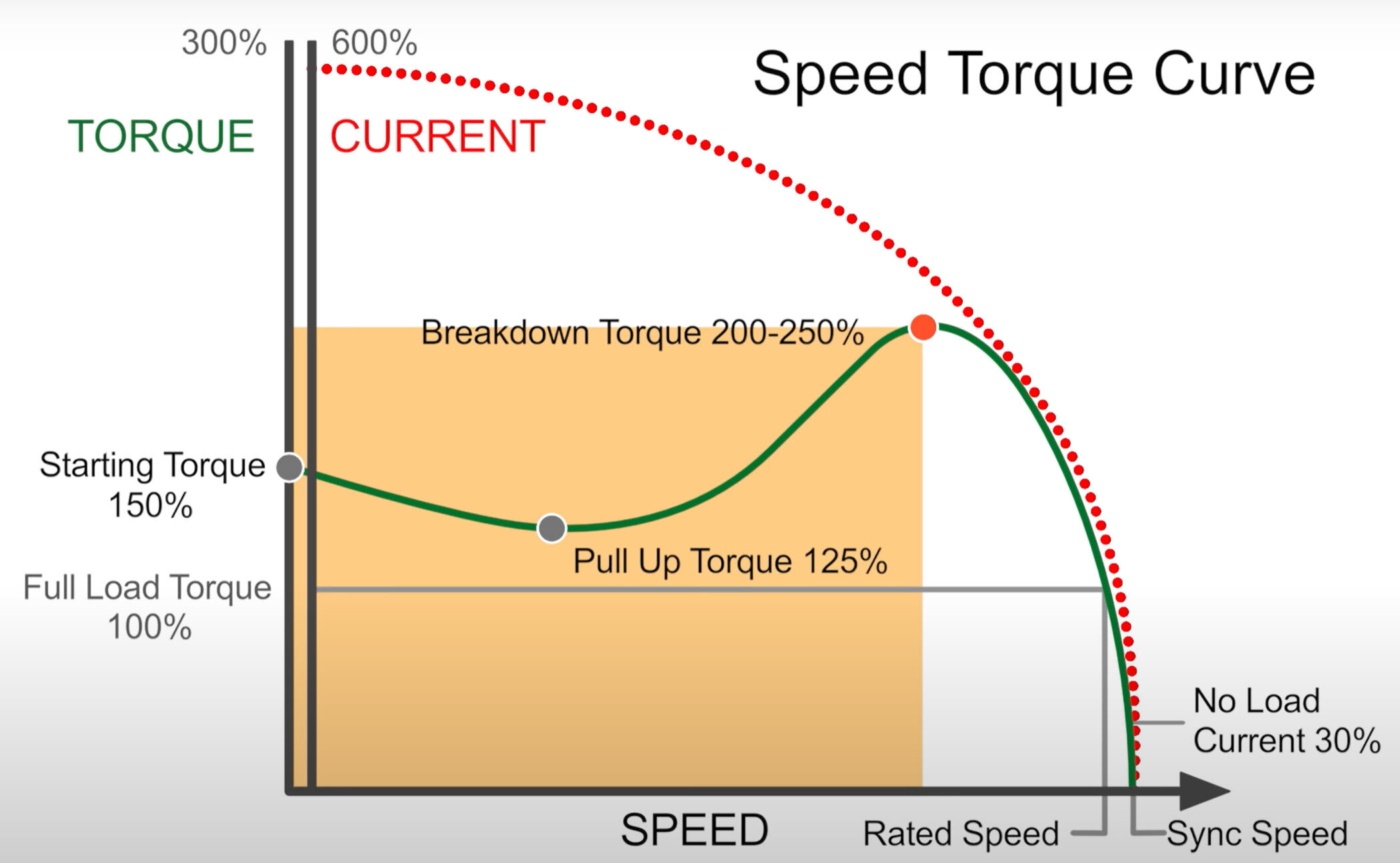
Calcul du couple
Vous devez savoir combien couple de besoins pour votre projet avant de choisir un motoréducteur. Le couple est la force qui fait tourner votre entraînement. Si le couple ne correspond pas à votre charge, votre motoréducteur ne fonctionnera pas correctement. Commencez par dresser la liste de toutes les pièces que votre motorisation fera bouger. Notez le poids et la taille de chaque pièce. Ensuite, déterminez la force nécessaire pour démarrer et maintenir le mouvement. Certains projets nécessitent un couple de démarrage élevé si la charge est lourde ou collante.
Voici les étapes à suivre pour déterminer le couple de votre motoréducteur :
Déterminez la charge totale que votre moteur doit déplacer.
Mesurez la distance entre le centre du variateur et la charge.
Utilisez la formule suivante :
Couple (lb-pi) = Force (lb) x Rayon (pi)Ajoutez un couple supplémentaire en cas de frottement ou de charges spéciales.
💡 Conseil : Vérifiez toujours le couple au démarrage et en cours de fonctionnement. Cela permet d'éviter les problèmes liés au moteur à engrenages et d'assurer le bon fonctionnement de votre projet.
Capacité de surcharge
Vous devez également tenir compte de la capacité de surcharge. Il arrive que votre lecteur reçoive une force supérieure à la normale. Cela peut se produire au démarrage ou si la charge change rapidement. Votre motoréducteur doit avoir une capacité de surcharge suffisante pour ces moments-là. Si ce n'est pas le cas, votre variateur risque de s'arrêter ou de se casser.
Éléments importants concernant la capacité de surcharge :
Vérifier les charges constantes et les charges de pointe.
Assurez-vous que votre motoréducteur peut supporter de brèves poussées de couple supplémentaire.
Choisissez un motoréducteur d'une puissance et d'une durée de vie suffisantes. capacité de surcharge du moteur pour votre projet.
⚠️ Remarque : Si votre projet comporte des arrêts ou des démarrages soudains, choisissez un motoréducteur doté d'une forte capacité de surcharge. Cela permet d'assurer la sécurité de votre entraînement et d'en améliorer le fonctionnement.
Lorsque la charge, le couple et la capacité correspondent bien, votre motoréducteur donne le meilleur de lui-même. Vous obtenez un entraînement fiable, qui dure plus longtemps et qui fonctionne mieux pour votre projet.
3. Vitesse (RPM)
Vitesse de sortie
Vous devez vous assurer que la vitesse de sortie du motoréducteur est adaptée à votre projet. Tout d'abord, notez la vitesse de sortie dont votre motoréducteur a besoin. Chaque variateur fonctionne mieux à une certaine vitesse. Si vous choisissez la mauvaise vitesse, votre variateur risque de ne pas fonctionner correctement. Si la vitesse est trop élevée, les pièces peuvent s'user plus rapidement. Si la vitesse est trop faible, votre lecteur risque d'être lent et de gaspiller de l'énergie.
Voici les étapes à suivre pour adapter la vitesse de sortie :
Trouvez la gamme de vitesses dont votre projet a besoin.
Vérifiez la vitesse nominale du motoréducteur et comparez-la à celle de votre entraînement.
Veillez à ce que le motoréducteur maintienne une vitesse constante pendant le travail.
🏁 Conseil : Testez le motoréducteur avec la charge réelle. Cela vous permet de voir si la vitesse est adaptée à votre entraînement.
La bonne vitesse permet à votre lecteur de mieux fonctionner. Il fonctionnera en douceur et durera plus longtemps. Vous économisez également de l'énergie et rendez votre projet plus efficace.
Contrôle de la vitesse
Vous devez également réfléchir à la manière dont vous contrôlerez la vitesse. Certains projets nécessitent une vitesse fixe. D'autres nécessitent de changer de vitesse en cours de travail. Les motoréducteurs peuvent vous offrir différentes façons de contrôler la vitesse. Vous pouvez utiliser des variateurs de fréquence, changer de vitesse ou utiliser des contrôleurs électroniques.
Moyens courants de contrôler la vitesse :
Variateurs de fréquence pour motoréducteurs électriques
Changements de vitesse manuels pour les entraînements mécaniques
Régulateurs électroniques pour un réglage précis de la vitesse
Un bon contrôle de la vitesse permet à l'entraînement de mieux fonctionner. Vous pouvez modifier la vitesse pour l'adapter à différentes charges. Cela permet d'assurer la sécurité de l'entraînement et d'éviter les dommages.
⚡ Remarque : Si votre projet nécessite de nombreux changements de vitesse, choisissez un motoréducteur avec un contrôle facile de la vitesse. Il est ainsi plus facile de choisir le bon variateur et d'obtenir les meilleurs résultats.
Lorsque vous vous concentrez sur la vitesse, vous faites de meilleurs choix pour votre motoréducteur. Vous contribuez au bon fonctionnement de votre entraînement, vous le protégez et vous tirez le meilleur parti de votre projet.
4. Rapport de démultiplication
Équilibrer la vitesse et le couple
Rapport de démultiplication est l'un des facteurs les plus importants lors du dimensionnement et de la sélection d'un motoréducteur. Le rapport de transmission indique combien de fois l'arbre d'entrée tourne pour chaque tour de l'arbre de sortie. Ce rapport modifie à la fois la vitesse et le couple de votre entraînement. Un rapport de démultiplication élevé réduit la vitesse de sortie mais augmente le couple. Un rapport de démultiplication faible a l'effet inverse. Vous obtenez une vitesse plus élevée mais un couple plus faible.
Si votre entraînement doit déplacer des charges lourdes, choisissez un rapport de démultiplication plus élevé.
Si votre conduite doit être rapide, choisissez un rapport de vitesse inférieur.
Adaptez toujours le rapport de démultiplication aux besoins de votre application.
⚙️ Conseil : Le rapport de démultiplication permet d'affiner les performances de votre motoréducteur. Un bon équilibre permet à votre entraînement de fonctionner en douceur et de durer plus longtemps.
Sélection d'un rapport de motorisation
Le choix d'un rapport de motoréducteur exige que vous examiniez les besoins de votre projet. Commencez par dresser la liste de la vitesse et du couple que votre entraînement doit fournir. Ensuite, vérifiez les spécifications du motoréducteur. La plupart des fabricants fournissent des graphiques ou des tableaux montrant comment les différents rapports de transmission affectent la vitesse et le couple de sortie.
Voici un processus simple pour dimensionner et sélectionner un rapport de motoréducteur :
Notez la vitesse de sortie et le couple requis pour votre entraînement.
Examinez les rapports de démultiplication disponibles du motoréducteur.
Utilisez les tableaux du fabricant pour voir comment chaque rapport modifie la vitesse et le couple.
Choisissez le rapport qui correspond le mieux à votre application.
Rapport d'engrenage | Vitesse de sortie | Couple de sortie | Meilleur pour |
|---|---|---|---|
Haut | Faible | Haut | Charges lourdes, déplacements lents |
Faible | Haut | Faible | Déplacements rapides, charges légères |
📝 Remarque : Lors de la sélection d'un motoréducteur, il faut toujours prendre en compte les demandes normales et les demandes de pointe. Le bon rapport protège votre entraînement contre les surcharges et permet à votre motoréducteur de fonctionner efficacement.
Le choix d'un motoréducteur avec le bon rapport d'engrenage garantit que votre entraînement répond aux besoins de votre application. Vous obtenez des performances fiables et une durée de vie plus longue.
5. Puissance et tension
Compatibilité de l'alimentation
Vous devez vérifier si votre motoréducteur correspond à l'alimentation électrique dont vous disposez. Chaque motoréducteur a besoin d'un certain type d'alimentation pour fonctionner correctement. Certains motoréducteurs fonctionnent en courant alternatif, d'autres en courant continu. Vous devez savoir quel type d'alimentation est disponible sur votre site avant de choisir un motoréducteur. Si vous choisissez le mauvais type d'alimentation, votre motoréducteur risque de ne pas fonctionner ou d'être endommagé.
Assurez-vous que votre alimentation électrique correspond aux besoins du motoréducteur :
Vérifiez si vous disposez d'une alimentation en courant alternatif ou en courant continu.
Examinez la tension et la fréquence fournies par votre site.
Vérifiez si votre motoréducteur peut supporter la puissance disponible.
⚡ Conseil : Lisez toujours le manuel du motoréducteur. Le manuel vous indique quelle est la meilleure alimentation.
Si vous utilisez un moteur électrique, vous devez également vérifier la fréquence. La plupart des moteurs électriques fonctionnent à 50 Hz ou 60 Hz. L'utilisation d'une fréquence incorrecte peut entraîner un fonctionnement trop rapide ou trop lent du motoréducteur. Cela peut nuire à votre application et réduire la durée de vie de votre motoréducteur.
Exigences en matière de tension
Vous devez adapter la tension de votre motoréducteur à votre source d'alimentation. L'utilisation d'une tension incorrecte peut endommager le motoréducteur ou le rendre dangereux. Vérifiez toujours la tension nominale sur l'étiquette du motoréducteur. Si votre site a une tension différente, vous aurez peut-être besoin d'un transformateur ou d'un motoréducteur différent.
Marche à suivre pour vérifier les exigences en matière de tension :
Recherchez la tension nominale de votre motoréducteur.
Comparez-la à l'alimentation électrique de votre site.
Demandez à votre fournisseur si vous avez besoin d'aide pour faire correspondre les tensions.
Tension (V) | Utilisation courante | Notes |
|---|---|---|
12-24 | Petits motoréducteurs à courant continu | Utilisé dans les équipements portables |
110-120 | Standard AC | Utilisé en Amérique du Nord |
220-240 | Standard AC | Utilisé en Europe et en Asie |
📝 Remarque : Ne jamais faire fonctionner un motoréducteur à une tension supérieure à celle pour laquelle il est prévu. Cela peut entraîner une surchauffe et une défaillance.
Lorsque vous adaptez votre motoréducteur à la puissance et à la tension appropriées, vous protégez votre équipement et assurez le bon fonctionnement de votre application.
6. Taille et montage
Forme physique
Vous devez vous assurer que votre motoréducteur est adapté à l'espace dont vous disposez. Mesurez l'endroit où vous prévoyez d'installer le motoréducteur. Vérifiez la longueur, la largeur et la hauteur. Si le motoréducteur est trop grand, il ne s'adaptera pas ou risque de bloquer d'autres pièces. S'il est trop petit, il risque de ne pas fournir suffisamment de puissance. Comparez toujours la taille du motoréducteur à l'espace dont vous disposez.
Étapes de vérification de l'aptitude physique :
Mesurez votre espace d'installation.
Regardez les dimensions du motoréducteur dans la fiche technique.
Laissez de la place pour les câbles et la circulation de l'air.
🛠️ Conseil : Prévoyez un accès facile. Il peut être nécessaire d'accéder au motoréducteur pour l'entretien ou les réparations.
Certains projets nécessitent un motoréducteur compact. D'autres ont besoin d'un motoréducteur plus grand pour plus de puissance. Adaptez toujours la taille du motoréducteur aux besoins de votre projet.
Options de montage
Vous devez choisir le bon type de montage pour votre motoréducteur. La méthode de montage influe sur le fonctionnement du motoréducteur et sur sa facilité d'installation. Les options de montage les plus courantes sont le montage sur pattes, le montage sur bride et le montage sur face. Chaque type présente ses propres avantages.
Type de montage | Meilleur cas d'utilisation | Notes |
|---|---|---|
Montage du pied | Surfaces stables et planes | Facile à installer et à retirer |
Montage de la bride | Espaces restreints, utilisation verticale | Bon pour les mises en page compactes |
Montage sur la face | Connexion directe à la machine | Gain de place, support solide |
Vérifiez les trous de fixation et le matériel. Assurez-vous qu'ils correspondent à votre équipement. Si vous n'utilisez pas la bonne fixation, le motoréducteur risque de vibrer ou de se déplacer.
⚠️ Remarque : Pour les environnements difficiles ou sales, vérifiez les indices de protection du motoréducteur. Ces indices indiquent si le motoréducteur peut résister à la poussière, à l'eau ou à d'autres conditions difficiles.
Choisir un option de montage qui assure la sécurité de votre motoréducteur et en facilite l'entretien. Le bon choix permet à votre motoréducteur de durer plus longtemps et de mieux fonctionner.
7. Cycle d'utilisation et environnement
Cycle de travail Exigences
Vous devez connaître le cycle de fonctionnement avant de choisir un motoréducteur. Le cycle de fonctionnement indique la durée pendant laquelle le motoréducteur fonctionne et se repose. Certains motoréducteurs fonctionnent toute la journée. D'autres démarrent et s'arrêtent plusieurs fois. Si vous choisissez le mauvais motoréducteur, il peut devenir trop chaud et se briser prématurément.
Types de cycles de travail :
Fonctionnement continu : Le motoréducteur fonctionne en permanence.
Fonctionnement intermittent : Le motoréducteur démarre et s'arrête souvent.
Service court : Le motoréducteur fonctionne pendant une courte période, puis se repose.
Adaptez le motoréducteur à votre cycle de travail. Si vous avez besoin d'un service continu, choisissez un motoréducteur conçu pour cela. Pour les autres types, vérifiez les tableaux du fabricant. Ces tableaux indiquent la durée pendant laquelle le motoréducteur peut fonctionner avant de s'arrêter.
🔍 Conseil : Vérifiez toujours le taux d'utilisation sur l'étiquette du motoréducteur. Cela permet d'éviter les surchauffes et d'assurer la sécurité du système.
Exigences environnementales
Vous devez également penser à l'endroit où le motoréducteur fonctionnera. La chaleur, la poussière, l'eau et les produits chimiques peuvent modifier sa durée de vie. Si vous oubliez ces éléments, le motoréducteur risque de se casser ou de ne pas fonctionner correctement.
Facteurs environnementaux clés :
Température : Une température trop élevée peut endommager le motoréducteur.
L'humidité : L'eau peut provoquer de la rouille ou des courts-circuits.
Poussière et débris : La saleté peut bloquer les pièces mobiles et les ralentir.
Produits chimiques : Certains produits chimiques peuvent endommager l'extérieur du motoréducteur.
Vérifiez l'indice de protection IP du motoréducteur pour savoir dans quelle mesure il est protégé de la poussière et de l'eau. Pour les endroits difficiles, choisissez un motoréducteur avec un indice IP élevé. Ainsi, votre motoréducteur reste sûr et fonctionne bien.
Environnement | Facteur de risque | Solution |
|---|---|---|
Haute température | Surchauffe | Utiliser le refroidissement ou la ventilation |
Zones humides | Rouille, court-circuit | Choisir des motoréducteurs scellés |
Lieux poussiéreux | Colmatage | Utiliser un indice IP élevé |
🛡️ Remarque : Vérifiez toujours les besoins de votre site et choisissez un motoréducteur adapté à votre cycle de travail et à votre environnement. Cela permet à votre motoréducteur de bien fonctionner et de durer plus longtemps.
Pour choisir le bon motoréducteur, il faut tenir compte de sept éléments principaux. Tout d'abord, réfléchissez aux besoins de votre projet. Ensuite, assurez-vous que la charge, le couple et la vitesse sont adaptés à votre travail. Choisissez ensuite le rapport de transmission qui convient le mieux. Enfin, vérifiez que la puissance et la tension sont correctes. Vérifiez également que la taille et le montage sont adaptés à votre espace. N'oubliez pas de réfléchir à la durée et à l'emplacement du moteur à engrenages. Utilisez toujours une liste de contrôle pour chaque projet.
Si votre projet est délicat, demandez à un expert ou consultez des guides. Suivez ces étapes pour vous aider à choisir le bon motoréducteur à chaque fois.
FAQ
Quel est le facteur le plus important dans le choix d'un motoréducteur ?
Vous devez toujours commencer par votre exigences en matière de candidature. Dressez d'abord la liste de vos besoins. Cette étape vous permet d'adapter le motoréducteur à votre projet et d'éviter des erreurs coûteuses.
Comment calculer le couple adéquat pour votre motoréducteur ?
Utilisez la formule suivante :Couple (lb-pi) = Force (lb) x Rayon (pi)
Ajoutez un couple supplémentaire en cas de frottement ou de charges spéciales. Vérifiez toujours le couple de démarrage et le couple de fonctionnement.
Peut-on utiliser n'importe quel motoréducteur avec n'importe quelle alimentation ?
Non. Vous devez adapter la tension et le type (CA ou CC) du motoréducteur à votre source d'alimentation. L'utilisation d'une alimentation électrique inadaptée peut endommager le motoréducteur.
Pourquoi le rapport de transmission est-il important ?
Le rapport de transmission modifie la vitesse et le couple. Un rapport élevé donne plus de couple et moins de vitesse. Un rapport faible donne plus de vitesse et moins de couple. Choisissez le rapport qui convient à votre travail.
Comment protéger un motoréducteur dans des environnements difficiles ?
Vérifiez l'indice de protection IP du motoréducteur. Choisissez un modèle avec un indice élevé pour la poussière ou l'eau. Utilisez des motoréducteurs étanches pour les endroits humides ou sales.
🛡️ Conseil : Respectez toujours les directives du fabricant pour les environnements difficiles.
